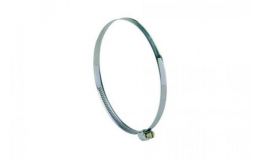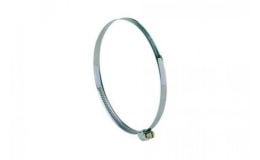Fastlec uses cookies to ensure that we give you the best experience on our website. If you continue we assume that you consent to receive all cookies on the Fastlec website. Read More.
Ducting Flexible
Flexible Ducting: An In-Depth Guide to Materials and Recommended Uses
Flexible ducting is a versatile and essential component of heating, ventilation, and air conditioning (HVAC) systems. It is designed to transport air, fumes, or particulates from one location to another, with the ability to adapt to different layouts and installation requirements. This article provides a comprehensive overview of the various types of flexible ducting and their recommended uses, including radial ducting, uninsulated flexible aluminium ducting, insulated aluminium flexible ducting, vinyl woven cloth flexible ducting, acoustic flexible aluminium ducting, PVC flexible ducting, semi-rigid aluminium ducting.
Radial Ducting Systems
Radial ducting systems, provide installers with a full range of 75mm or 90mm diameter ducting ancillaries for complete Mechanical Ventilation Heat Recovery (MVHR) installations. These systems are fully SAP tested and a perfect fit for new build projects.
In a radial system, rigid steel ducting is still used for the ducts from the unit to the two extract/supply manifolds, as well as to and from the exhaust/intake ducts. These ducts also have drum silencers to stop breakout noise from the fan.
Semi-rigid radial ducting is also available, with fittings for various applications, such as the 125mm to 2x75mm straight connector, 75mm 90º bend, and 90mm radial to 125mm male straight adaptor. These products offer versatile ducting solutions for different ventilation needs.
Radial ducting systems offer a comprehensive range of ducting solutions, including semi-rigid options, for various HVAC and MVHR applications. These systems are designed to provide efficient ventilation while minimizing noise and optimizing installation flexibility.
Uninsulated Flexible Aluminium Ducting
Uninsulated flexible aluminium ducting is lightweight and resistant to corrosion, making it an ideal choice for applications involving high moisture or corrosive environments. It is commonly used for air conditioning systems, ventilation, and fume extraction in residential, commercial, and industrial settings. However, it is not recommended for use in situations where thermal insulation is required, as it lacks an insulating layer.
Insulated Aluminium Flexible Ducting
Insulated aluminium flexible ducting is similar to its uninsulated counterpart, with the added benefit of a layer of insulation material wrapped around the duct. This added insulation helps prevent heat loss or gain, making it suitable for use in temperature-sensitive applications such as HVAC systems in residential and commercial buildings. It is also an excellent choice for reducing noise and condensation issues associated with ventilation and air conditioning systems.
Vinyl Woven Cloth Flexible Ducting
Vinyl woven cloth flexible ducting is made from a combination of vinyl-coated polyester, polyester yarns, and a wire helix. It is highly flexible, lightweight, and resistant to chemicals and moisture, making it suitable for use in environments where corrosive gases or liquids may be present. This type of ducting is commonly used for fume extraction, air handling, and dust collection in industrial applications, as well as for ventilation in commercial settings.
Acoustic Flexible Aluminium Ducting
Acoustic flexible aluminium ducting is designed to minimize noise generated by airflow and vibration in HVAC systems. It features an aluminium construction with an additional layer of sound-absorbing material, making it ideal for use in applications where noise reduction is essential, such as in residential buildings, offices, and public spaces.
PVC Flexible Ducting
PVC flexible ducting is made from polyvinyl chloride and is known for its durability, flexibility, and resistance to chemicals, making it suitable for a wide range of applications. It is commonly used in ventilation systems, fume extraction, and dust collection in industrial and commercial settings. Its resistance to UV radiation also makes it suitable for outdoor use.
Semi-Rigid Aluminium Ducting
Semi-rigid aluminium ducting offers a balance between flexibility and rigidity, making it ideal for use in applications requiring a certain degree of bendability while maintaining structural integrity. It is typically used in air conditioning and ventilation systems, as well as for fume extraction and dust collection in industrial settings. Its aluminium construction makes it resistant to corrosion and suitable for use in high-moisture environments.
In conclusion, flexible ducting is a critical component in various HVAC applications
- In stock
- In stock
- In stock
- In stock
- In stock
-
2 Days Delivery
- In stock
- In stock
- In stock
- In stock
- In stock
- In stock













